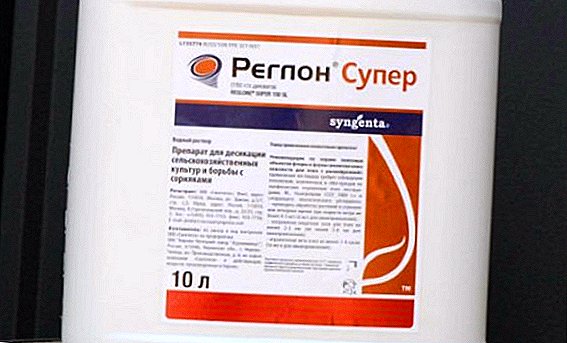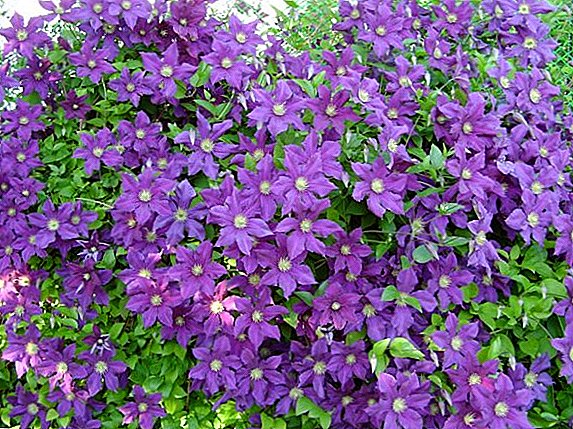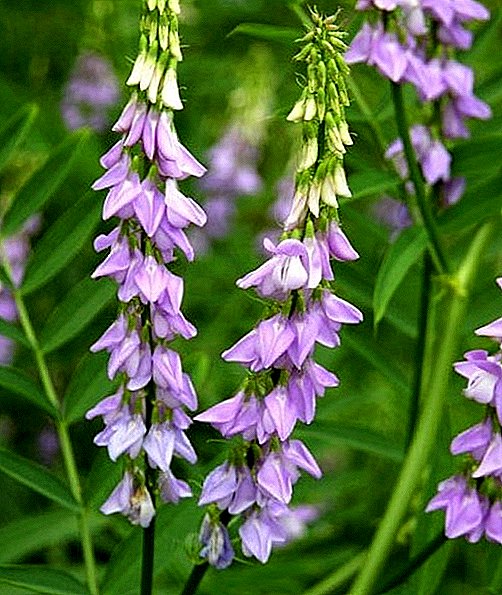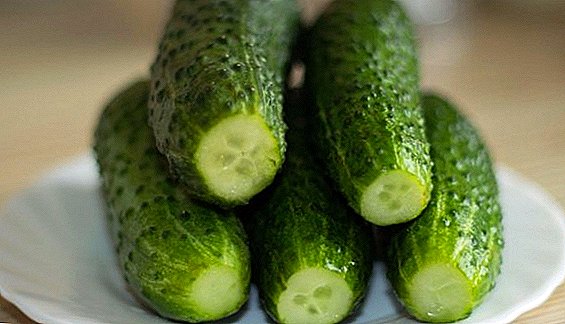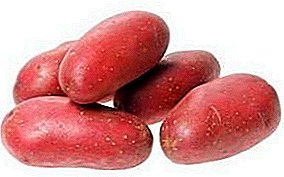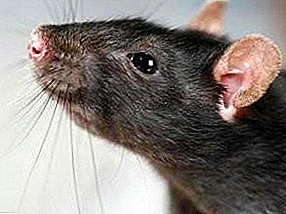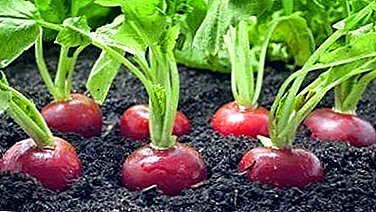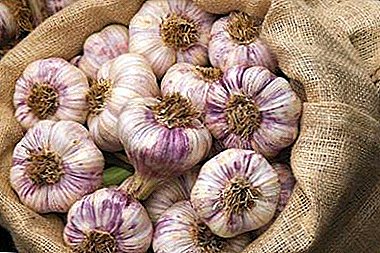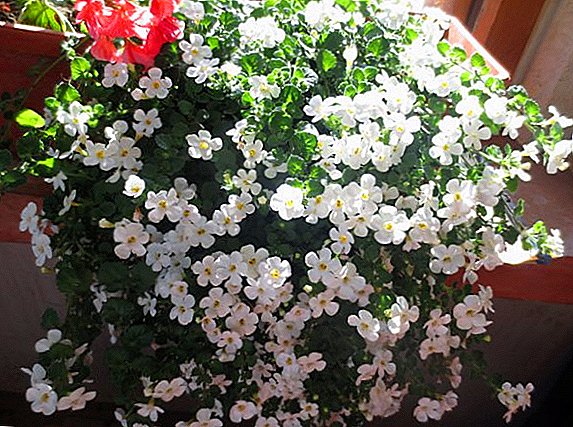 Not everyone can tell the difference. rhubarb from burdock, because apparently they are very similar. But to know the difference between them is still worth it, because rhubarb has many useful properties and is widely used in traditional medicine. How exactly do they use the famous plant?
Not everyone can tell the difference. rhubarb from burdock, because apparently they are very similar. But to know the difference between them is still worth it, because rhubarb has many useful properties and is widely used in traditional medicine. How exactly do they use the famous plant?
What is rhubarb
Let's first learn what kind of a miracle plant is and what taste does it have?
Biological description
Rhubarb is a perennial, very large herb. Its root is dark brown or red, consists of a branched rhizome and a powerful root system. Three years after planting, the roots often grow in a radius of about 100 cm and lie in the soil by 50 cm.
The stem of the plant is straight, hollow. Most often it reaches 1 m, but sometimes it is 2.5 m. The surface is green with red spots and stripes. About 30 large green leaves develop on the plant: the stem leaves are small, the basal leaves are larger and more fleshy. Petioles - up to 70 cm in length.  The plant blooms with small white, pink, red flowers, which are collected in large inflorescences on the axils of the leaves and at the ends of the stems.
The plant blooms with small white, pink, red flowers, which are collected in large inflorescences on the axils of the leaves and at the ends of the stems.
This happens in June in the third year of grass development. Inflorescences sometimes reach 50 cm in length, the fruits are triangular brown nuts, 7-10 cm in size, ripen in July.
Did you know? In America, the rhubarb was given another name - “pie plant”, because they are often stuffed with baking. Americans also make candied fruit, jam and even kvass.
Taste qualities
The taste of raw and cooked rhubarb varies - raw petioles have a pronounced sour taste, and already cooked dishes become soft and refreshing, moderately sour, with a slight smell of apples.
The composition and caloric content of the product
Let's see how many calories are in this grass and what nutrients it contains.
Calories
Those who want to lose weight, you must enter rhubarb in your diet, because it is very dietary - 100 g of the product contains only 18 Kcal! 
Vitamins and minerals
In the product there are:
- valuable dietary fiber - not less than 3.2%;
- carbohydrates - up to 2.5% (also mono / disaccharides, natural starch);
- proteins - about 0.8%.
Important! 100 grams of plants contain the daily rate of useful substances for humans.
Vitamins:
- A and provitamin A;
- group B;
- K and PP;
- E;
- C (more than in lemon or grapefruit).
Trace elements:
- iron;
- selenium;
- copper.
 Macronutrients:
Macronutrients:- calcium;
- potassium;
- magnesium;
- phosphorus;
- sodium.
What is the use of rhubarb
Useful properties of the plant:
- reduces the risk of pneumonia, anemia, diseases of the cardiovascular system;
- strengthens the immune system;
- restores the normal functioning of the digestive system;
- improves appetite;
- stabilizes metabolism;
- acts well on the nervous system.
Special cases
But there are special cases when the consumption of this herb is not recommended. The following discussion focuses on the use of rhubarb in children, pregnant women and women who are breastfeeding.
Read the rules of rhubarb cultivation, as well as read the recipes for harvesting rhubarb for the winter.
Pregnant and lactating
Women carrying babies are allowed to eat this plant as food, but not raw, but heat-treated, as part of any food.
Rhubarb is rich in vitamin K, which is essential for thickening the blood. Grass stems are useful for women with hypertension and those who are at risk for pre-eclampsia.  Due to the presence of a large amount of calcium, the plant contributes to the formation of the musculoskeletal system of the child and helps the expectant mother to preserve strong teeth and bones.
Due to the presence of a large amount of calcium, the plant contributes to the formation of the musculoskeletal system of the child and helps the expectant mother to preserve strong teeth and bones.
It will save her from colds and viruses, increase immunity. A small amount of it will help from diarrhea, a large dose, on the contrary, will have a laxative effect.
During breastfeeding, eating rhubarb is not recommended because of the risk of impaired protein metabolism.
Did you know? Rhubarb stains the milk of lactating women yellow, which turns when adding alkali to red. The same happens with the urine and sweat of a person who takes medications based on this herb.
Children
Children up to three years old are not recommended to use this plant in unlimited quantities for the same reasons as for nursing mothers. Yes, and older children should be given it with caution.
Side effects
When using rhubarb can occur:
- irritation of the skin and mucous membranes;
- tenesmus (painful and ineffectual urge to defecate and urinate),
- diarrhea;
- colic;
- vomiting;
- a strong rush of blood to the pelvic organs.

Important! With prolonged use of the plant may reduce the level of potassium in the body.
Contraindications
In addition to individual intolerance, the use of a plant is prohibited when:
- kidney stones and gall bladder;
- bleeding in the stomach, hemorrhoidal hemorrhages;
- appendicitis;
- peritonitis;
- ulcer;
- rheumatism;
- diabetes;
- cholecystitis;
- inflammations of the genitourinary system;
- gout;
- pancreatitis.
Forms of rhubarb
They make tinctures, decoctions, powders from rhubarb, get juice from it and eat it raw (and this is not the whole list!). We will tell about the main forms of its application and dwell in detail on each.
Tincture
Tincture treats problems of the digestive system, diseases of the gallbladder and biliary tract, anemia. 
We advise you to find out under which diseases tinctures are used: Indian rice, wild rose, bison, bee moth, aconite and propolis.
Infusion
The infusion has antiseptic and anti-inflammatory properties. It is used against colds, rhinitis, sinusitis, nasal congestion.
They are also treated for constipation.
Decoction
Helps hypertensive patients to overcome high blood pressure. Good for dealing with hepatitis. 
Powder
It is a good diuretic. It is also used for constipation. In addition, he is able to regulate the menstrual cycle.
Normalization of the menstrual cycle also contribute to: cyclamen, nut grass, pomegranate juice, garden savory, burdock juice, black cohosh, saffron, black walnut leaves, clitoria and mountain ash red.
It has an antispasmodic effect on the liver, gallbladder, spleen, small intestine, soothes pain in the kidneys, bladder. Helps with skin problems (vitiligo).
Recipes of traditional medicine
Traditional medicine is rich in various recipes, among them there are those that include rhubarb root. We will share with you some of them.
For constipation
Try to prepare such a simple, but very effective remedy from the available ingredients:
- crushed rhubarb root - 2 tbsp. l .;
- water - 1 tbsp.

- Fill the root with boiling water, let it infuse like tea.
- Filter.
- Take the infusion is necessary for 1/3 cup before bedtime.
Coping with such a problem as constipation will also help: dodder, beet leaves, gentian, chard, sage, raisins, chamomile and pelargonium.
Diarrhea
- Clean the roots of the plant from the ground, rinse well.
- Drain them, finely chop.
- Spread out in a warm, but not sunny place.
- Spread dried roots into powder.
- Use twice a day - at the tip of a teaspoon, washed down with water.
From hypertension
One of the most effective folk remedies consists of simple components:
- crushed dried petioles - 2 tbsp. l .;
- water - 1.5 st.
- Boil the water.
- Put the stalks in it.
- Boil everything on low heat for half an hour.
- Turn off the fire, let it cool.
- Filter.
- To normalize the pressure enough for 1.5 cups of drink per day.
From avitaminosis
Such a tasty, fragrant drug can be prepared for adults and children and used for the prevention of vitamin deficiency in the winter. How to do:
- rhubarb stalks;
- sugar or honey to taste.

- Petiole peel off, wash.
- Dry them.
- Squeeze the juice.
- Put honey or sugar.
- Drink 1.5 cups of juice per day to increase immunity.
Did you know? Daily wiping the face with rhubarb juice will help get rid of age spots and freckles, tighten wrinkles. And some women with this grass give their blond hair golden, straw-yellow, copper or light brown shades (depending on the method of application).
Now you know about the beneficial properties of rhubarb, and as you can see, there are a lot of them! Remember that self-medication is not worth it. For a start, be sure to consult a doctor. And if you do everything as recommended, you will certainly be healthy.


